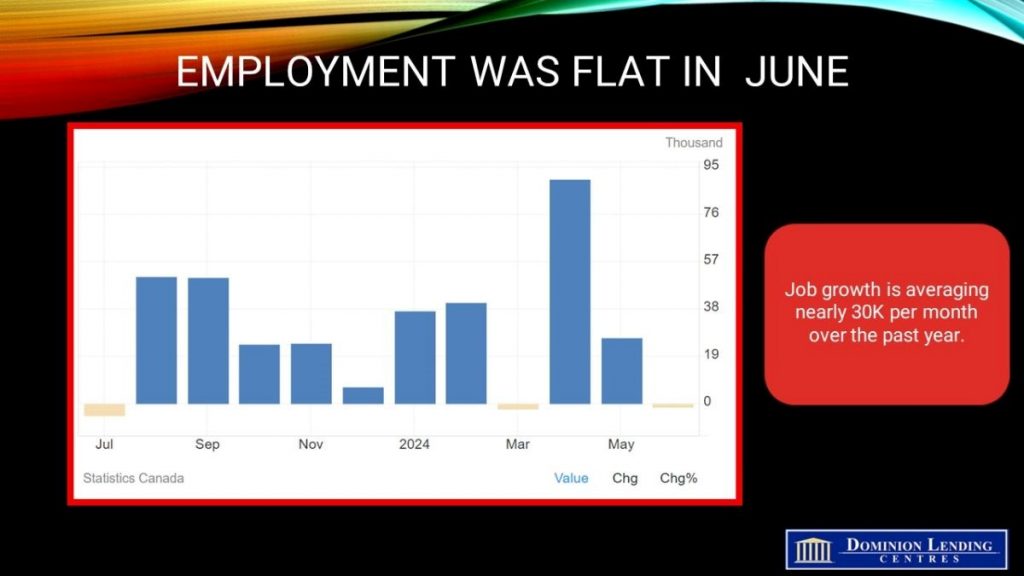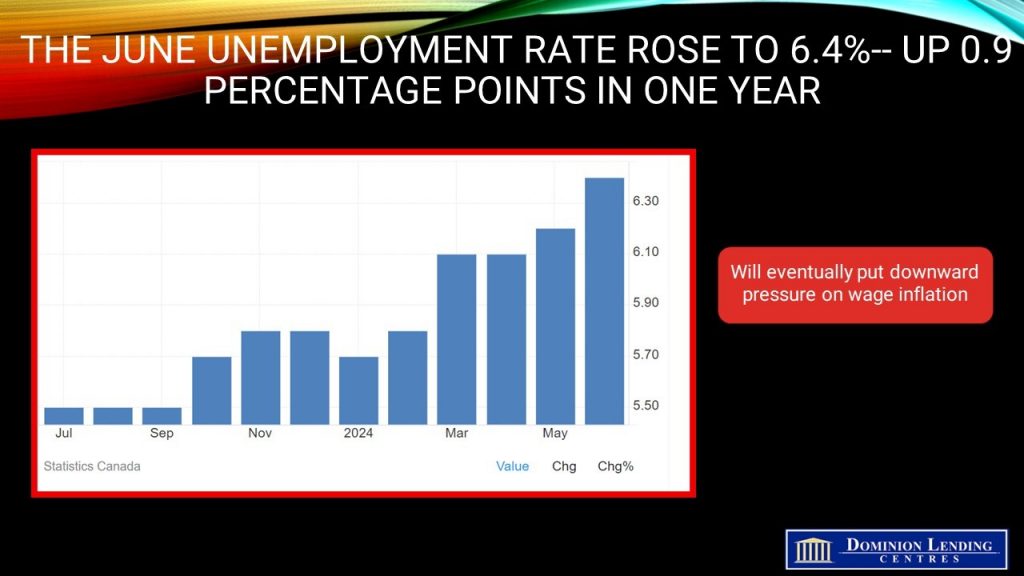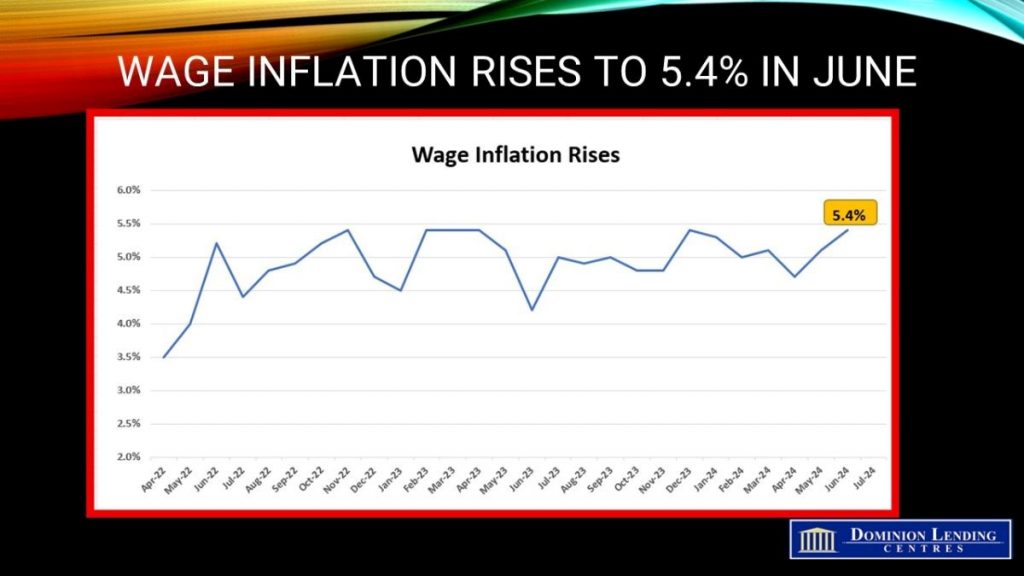Articles
Posted on July 5, 2024
Weaker-than-expected Jobs Report Keeps Further BoC Rate Cuts In Play
Weaker-Than-Expected June Jobs Report Keeps BoC Rate Cuts In Play
Canadian employment data, released today by Statistics Canada, showed a marked slowdown, which historically would have been a harbinger of recession. This cycle, immigration has augmented the growth of the labour force and consumer spending, forestalling a significant economic downturn. Nevertheless, the Bank of Canada will continue to cut interest rates by at least 175 basis points through next year. Whether they do so at their next meeting on July 24 will depend on the June inflation data released on July 16.
Canada shed 1,400 jobs last month, following a 26,700 increase in May. Economists had been expecting a stronger showing. Monthly job gains have averaged around 30,000 in the past year, while labour force growth has been more than 50,000, causing the jobless rate to rise. Full-time jobs declined marginally while part-time work edged upward. Job losses in June were led by decreases in transportation and warehousing, information and recreation, and wholesale and retail trade.
Regionally, jobs decreased in Quebec but rose in New Brunswick and Newfoundland and Labrador.
Population growth isn’t likely to slow shortly, meaning that anything short of about a 45k employment gain will increase the jobless rate. The jobless rate rose to 6.4%, up two ticks from a month earlier and 1.6 percentage points above the July 2022 cycle low. It is also the highest level since 2017 (excluding the pandemic). The rising unemployment rate aligned with the Bank of Canada’s rhetoric that higher interest rates damaged the labour market and strengthened the case for further rate cuts to support the economy.
Total hours worked were down 0.4% in June. On a year-over-year basis, total hours worked were up 1.1%. Average hourly wages among employees increased 5.4% in June on a year-over-year basis, following growth of 5.1% in May (not seasonally adjusted). This won’t sit well with the central bank’s Governing Council, but they realize that wage inflation is a lagging economic indicator, and rapidly rising unemployment will ultimately dampen wage inflation.
The data were released at the same time as US payrolls, which showed hiring moderated in June and prior months were revised lower. This boosts the odds that the Federal Reserve will begin to cut interest rates in the coming months. Fluctuations in the loonie are often driven by the difference between US and Canadian interest rates, owing to the two countries’ tight economic links.
Bottom Line
Traders in overnight swaps increased their bets that the Bank of Canada will cut borrowing costs again in July, putting the odds at around two-thirds, up from around 55% before the release.
In a speech last week, Macklem said it’s “not surprising” that wages are moderating more slowly than inflation because wages tend to lag the trend in job growth. He also said the unemployment rate could rise further, but a significant increase isn’t needed to get inflation back to the 2% target.


